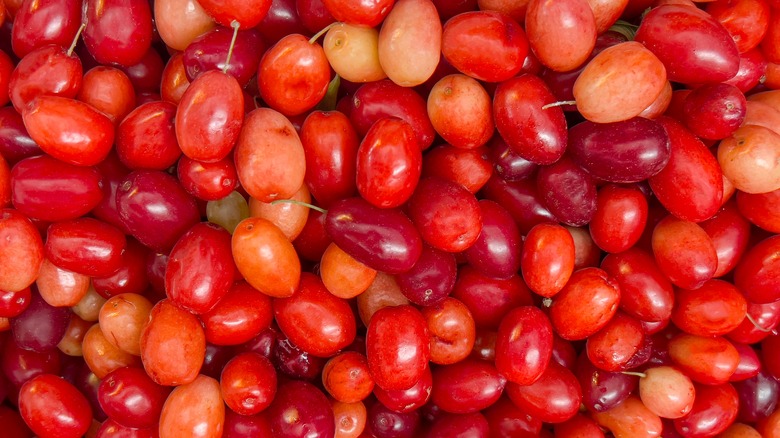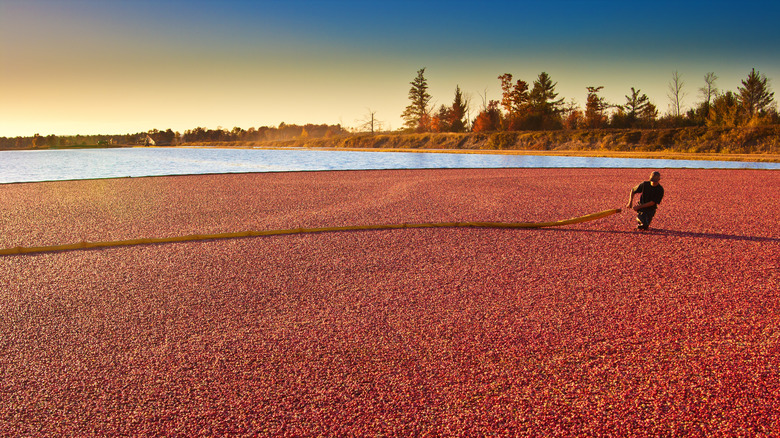The State That Grows The Most Cranberries
Each of the 50 states in America have a specific export that it's proud of. There are states known for producing the most coffee and even for growing the most rice, but who can claim the mantle for top cranberry producer, the secret to everyone's favorite sweet-tart sauce?
If you're a fan of the cheerfully red side dish, you can thank the state of Wisconsin for growing the most cranberries in the entire country. According to the United States Department of Agriculture, as of 2024, Wisconsin has grown a whopping 4.9 million barrels of cranberries. Not only does it grow the most cranberries in the United States, but the state has been the leading producer of cranberries for over 20 years now. It's unsurprising, then, that the cranberry business is a billion dollar industry in Wisconsin. With such an important emphasis on the tart berry, Wisconsin has even gone so far as to name the cranberry as the official state fruit.
Wisconsin: the cranberry state
So how many cranberries are we talking about here? Though cranberries aren't actually shipped or stored in wooden barrels any more, farmers still use the old-fashioned, 100-pound barrel as their standard of measurement for cranberry crops. So the 4.9 million barrels of cranberries that Wisconsin produced in 2024 is equal to 490 million pounds. It get's more impressive from there. On top of growing the most cranberries in the U.S., it is also responsible for growing a majority of the cranberries in the entire world!
When it comes to cranberry production, there is hardly any competition. Wisconsin produces twice as much as the number two state, Massachusetts, which produced 2.2 million barrels of cranberries in 2024. Why is Wisconsin the perfect place for cranberry growth? Local farmers can thank Wisconsin's large amount of water and the low pH soil, two vital requirements needed to make cranberries. Oddly enough, only 5% of this cranberry harvest is sold as raw cranberries, while all the rest goes into producing frozen cranberries, dried cranberries, juices, and, of course, that classic jellied, canned cranberry sauce.

